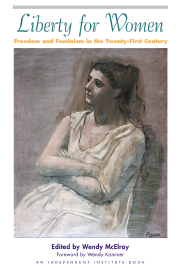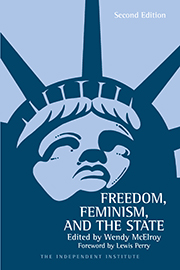I just returned from a 19-day whirlwind tour of China, a startling nation that lunges at you with energy and contradictions.
For example, China is completing the Three Gorges Dam Project, one of the greatest engineering feats in history; yet even its 5-star hotels warn against drinking from their faucets and advise patrons to brush their teeth with bottled water.
China is scrambling to restore, in many cases to rebuild, the 6,000-year history deliberately destroyed by Mao’s 10-year Cultural Revolution. At the same moment, it strains to become modern and Western. Nothing expresses the contradiction between old and new as clearly as the status of women.
Thus, among the questions I packed with my suitcase was “what is it like to be a woman in modern China?”
Definitive answers did not emerge. For one thing, next to no one spoke openly. Even in one-on-one conversations, no one criticized government policy except in side comments through which their reservations were strongly implied. Instead of answers I came away with mental snapshots and impressions of how specific women live within a struggling culture. (As a preliminary to the 2008 Olympics in Beijing, an unprecedented number of Chinese now speak passable English which made such impressions possible.)
L. addressed the dilemma of being “the sandwich generation”—a generation defined by China’s one-child policy. As only children, she and her husband care for four aging grandparents as well as their own child. There are no brothers or sisters to share the burden of elderly parents. There are no aunts or uncles for the youngest generation. She and her husband shoulder it all.
Typically, L. did not criticize the one-child policy. Indeed, she corrected some Western ‘misconceptions’. For example, rural people were often allowed a second birth if the first child was disabled, female, or otherwise undesirable.
Nevertheless, L. outlined how the “hard” population measure sprang from an earlier failed program. During the Korean War (which she called ‘the anti-US war’) Mao became convinced that all-out conflict with the West was inevitable. He urged people to have children in order to build up a huge army. Financial incentives were offered but when the population exploded and no war occurred, the government abruptly swung from one extreme of population control to the other.
In a state-owned carpet factory, we watched women at looms (never men, it seems) hand-knotting the exquisite silk carpets for which China is renown. The ‘life span’ of a weaver is 12 to 15 years during which she will make $80 to $100 a month. One carpet can take 18 months to complete, making a weaver’s lifetime production about 10 carpets.
A supervisor assured us that the women receive a break every 30 minutes so that their hands are not injured by the repetitive motion. But we were in one area for almost an hour and no one ceased work.
While browsing the sales room, I saw one carpet sell for $10,000.
I considered buying a small one but immediately realized that I could not let my dogs sleep or have accidents upon a year of someone else’s life.
J. bristled at a question from our group: “do forced sterilizations still happen in China?” The answer: they do not happen; they never did happen.” This, despite the fact that on December 1st, a Chinese court re-sentenced activist Chen Guangcheng to four years and three months for documenting cases of forced abortions and sterilizations.
The questioner pressed on about the well-documented sex-gap in birth rates, that is, the fact that many more boys than girls are born in China, largely due to sex selection technology used by parents. We were told there was no sex gap. After all, it was now illegal for a doctor to inform parents of the sex of an unborn child. Then, in one of those informative side-comments, she added, “of course, you can always bribe the doctor.”
The final word on understanding modern Chinese women, however, is that they are Chinese. They are caught up in the omnipresent Chinese mood swing between a superiority and inferiority complex.
Everywhere you hear that China has the oldest civilization, the largest population, the longest Wall... At the same time, you hear that China is a primitive nation that desperately needs to learn from the West.
The mood swing is reflected in their attitude toward Westerners.
Chinese women both scorn and seek to exploit the materialism of foreigners, all the while wearing blue jeans.
All of China seems to seek approval from the West while bristling at every possible slight.
Without meaning insult, the incident that best captures this Chinese sensitivity involves a public toilet. As another preliminary to the Olympics, China is modernizing an aspect that has apparently drawn foreign criticism: its lavatories. Chinese toilets are now rated from one-to-five stars. At some tourist attractions, government plaques outside facilities already identify the rating with a row of little stars.
At an early excursion, another woman and I went to an unrated traditional lavatory where we found a shallow basin embedded directly into the ground without a flushing device or any other familiar equipment. We stood and gawked. My photo-happy companion whipped out her camera to capture “the local color.”
Behind us, a woman erupted in English; she screamed in rage, “Is this what you are going to show your friends that China is a toilet!” No such purpose had crossed our minds but we fled as though guilty as charged.
Are we guilty as charged? Do Western women look upon Chinese society and our counterparts within it as somehow ‘lesser’? If we look down on the women, then we are wrong. Over and over, I met women who held onto every opportunity within their grasp: for an education, to practice English, to make a sale. They had in abundance what I worry about losing: hustle.
In the end, the most important question about Chinese women was packed unanswered into my return suitcase. “Where will they be in 10 years?”









